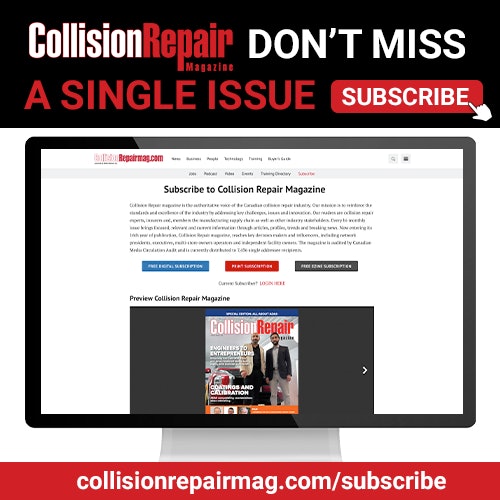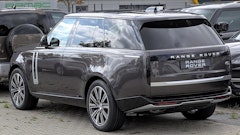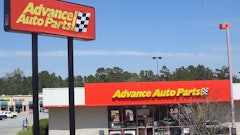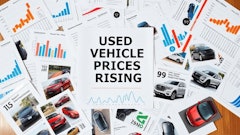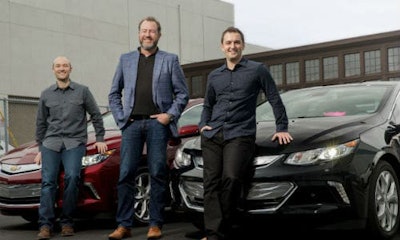
By Jeff Sanford
Toronto, Ontario — October 8, 2016 — It’s another week, and that means another slew of reports on autonomous vehicles (AVs). This week we look into how some of the big OEMs appear to be cooperating, rather than competing in the AV space, a report from bank Morgan Stanley outlines the case for a shrinking global auto insurance market and the founder of Lyft forecasts the end of personal car ownership.
– A new report, “Will Autonomous Vehicles Derail Trains?,” warns that trains may be in trouble because of AVs.
“We expect AVs to constitute a tangible threat to passenger rail within the next one or two decades,” the authors write. “Trains will remain the least expensive mode of transportation during peak times in urban areas. But during off-peak hours and in rural environments, they will lose riders to AVs. Rail companies may even end up in a downward spiral: with reduced overall ridership, rail companies’ overall unit costs for all remaining passengers will escalate because of the inherently high proportion of fixed costs in operating a train network. This could trigger price increases or reduced schedules, which would result in a further reduction in ridership.”
– James Carter, Principal Consultant at Vision Mobility, sums up what he sees as the “revolutionary” changes coming to the auto industry over the next 15 years in an interview with Automotive World. Carter suggests the newly-emerging “mobility-based” car industry will see urban dwellers give up ownership of vehicles in lieu of access to an AV, and he believes this will have a dramatic effect on dealerships. Dealers have three main revenue streams: car sales, part sales and service. The coming era of AVs will impact all of these streams.
“Parts will be impacted because vehicles are going to crash much less frequently. Dealers make a considerable amount of money selling crash parts to body shops and repairers. With a 30 – 40 percent margin in those parts, it’s a gold mine,” Carter said according to the report on Automotive World.
– Globally, auto insurance is a $200 billion business. A report from Wall Street investment bank Morgan Stanley says that a clutch of disruptive forces, “new mobility businesses, emerging car technologies, availability of driver data, digitization, regulation, and world economics,” are about to arrive. These trends will lead to steep revenue declines in “mature auto insurance markets.” Analysts at the bank expect a “fundamental move away from personal lines to commercial lines…[and] a radical shift of future growth to emerging markets and the likely entry of disruptive players.”
The report also finds “the motor insurance risk pool in mature economies is decreasing due to a sharp reduction in accident frequency following the adoption of collision avoidance and speed management technology, as well as the rising popularity of shared mobility businesses such as Uber.” The report’s authors anticipate the motor risk insurance pool to shrink by as much as, “40 percent by 2030 and 70 percent by 2040.”
– Reuters reports from the Paris Motor Show that some of the OEMs are willing to cooperate with each other on AVs, if it means beating tech companies to the punch. “Alarmed by the threat posed by Silicon Valley firms developing autonomous driving systems, carmakers at this week’s Paris Motor Show showed signs they are ready to hit back by cooperating in areas where they might have been expected to compete,” according to the report by Reuters.
Three of the big European OEMs, BMW, Daimler and VW’s Audi, announced this week, “… they would launch new traffic monitoring services next year which [will] give drivers a view of road conditions miles ahead.”
The new service will use video data collected from sensors in other cars and then fed back to the system jointly-owned by the OEMs, a navigation mapping service called HERE. The data will then be distributed to any car made by one of the OEMs in the group.
A group made up of General Motors, Nissan and VW are also, “experimenting with a plan to pull video data captured by their customers’ vehicles using Israeli firm Mobileye’s camera-based sensor systems, that may soon give automakers an edge over the likes of Google in the precision-mapping required for driverless cars.”
One important question raised in the report: Will carmakers be “able to charge premium prices for connected car services as technology companies like Google look to develop similar offerings for free, supported by advertising or other business models?”
Google is working with a traffic data start-up called Inrix to supply data to a crowd-sourced traffic and navigation service called Waze (owned by Google). The service will “help drivers find parking spots on smartphones using the free app.” Renault is said to be displaying a prototype of a Waze system built into its car dashboards at the Paris auto show.
The report also noted that, “…carmakers are now racing to plot their courses to building self-driving vehicles over the next five years, a dramatic acceleration in pace from the 10 to 15-year timeframes many had charted until pushed to speed up the process by the advances made by Google and Tesla.”
Gradually all of the car manufacturers will have to “get more and more involved in managing data. It’s natural. We’re going to have to work much more collaboratively,” says Stewart Callegari, according to the report by Reuters. Callegari is a Nissan product planning executive for driverless cars.
– HERE is launching a service that will have cars automatically sharing real-time data to improve commutes for everyone. A report on Engadget notes “Vehicles …will use their sensors and cameras to offer details on free parking spaces, traffic conditions, and road hazards. You’d know that a parking spot has opened up, or that heavy rain is forcing drivers ahead to slow down … The services will be available in the first half of 2017, and they won’t be limited to either German car brands or even the car industry in general. And yes, HERE is aware of the potential privacy issues. It’s promising that the data will be ‘anonymized,’ so there shouldn’t be an easy way for hackers to identify individual motorists. The main challenge is simply time — HERE’s solution won’t give you a truly comprehensive view of the road until there are plenty of connected cars roaming the streets.”
– Even The New Yorker magazine took a break from drawing incomprehensible cartoons to offer up a story on AVs this week. The story arrived in the wake of the 120-page guide on driverless cars released by the US Federal government. According to the New Yorker article, “If the government has its way,” information will be shared between all cars. The government release notes that “each entity [OEM] should develop a plan for sharing its . . . data with other entities. Such shared data would help to accelerate knowledge and understanding of HAV performance, and could be used to enhance the safety of [autonomous-vehicle] systems.”
The story also noted that the software running AVs, “…is constantly learning from real-world driving data, getting better at recognizing things around it (the road, other cars, nearby trees) and deciding how to respond (steering, braking). All the information is transmitted to a centralized brain and used to make the fleet smarter. This sharing, or ‘fleet learning,’ is incredibly powerful. It’s kind of like how, when your finger touches a hot stove, your foot, knee, and elbow also learn that it’s not a good idea to touch a hot stove.”
The article goes on to note that, “Unfortunately, there’s no easy way to help humans learn from the experience of other drivers … Every year, new drivers take to the roads and start from scratch. Older drivers lose their edge. Some drivers are just reckless. Fleet learning means that autonomous vehicles won’t suffer from any of these problems … The caveat to fleet learning is that the engineers and machine-learning algorithms are limited by the data available. If that data remains accessible only to the manufacturer, then autonomous vehicles designed by Honda, Chrysler, BMW, and GM will all have to make the same mistake (crashing at the same intersection, say) before fleet learning takes hold. Software updates to autonomous-driving systems will reach a company’s own vehicles, but not those of competitors.”
– John Zimmer is the co-founder of ride-sharing service Lyft. His company was acquired by GM in January. He recently published a manifesto on Medium outlining the fascinating, spectacular trends he sees at play in the global auto industry. According to Zimmer the global car industry as it exists now will be gone in ten years. Self-driving cars will come to dominate roads, at least in urban areas.
Zimmer envisions a coming world of much less pollution and traffic. It is hard for most living today to imagine such a thing—most today have only known a world of crowded roads and singularly owned cars. But Zimmer foresees a world in which we need less parking , streets can be narrowed and sidewalks widened. “It’s a world where we can construct new housing and small businesses on parking lots across the country — or turn them into green spaces and parks. That’s a world built around people, not cars,” he says. He predicts that, “1. Autonomous vehicle fleets will quickly become widespread and will account for the majority of Lyft rides within five years. 2. By 2025, private car ownership will all-but end in major US cities. 3. As a result, cities’ physical environment will change more than we’ve ever experienced in our lifetimes.”
What this means from a more conceptual viewpoint: “A full shift to “Transportation as a Service” is finally possible, because for the first time in human history, we have the tools to create a perfectly efficient transportation network.”
Peer-to-peer, on-demand ridesharing of the type Uber and Lyft provide is just the start. Once AVs demonstrate they are not just “toys” a rebuilding of the infrastructure of metropolitan areas will go ahead.
Zimmer’s outlook as to how this will happen differs from the visions Tesla CEO Elon Musk has. Whereas Elon believes the “transition to autonomous vehicles will happen through a network of autonomous car owners renting their vehicles to others,” Zimmer’s take is that “the transition to an autonomous future will not occur primarily through individually owned cars. It will be both more practical and appealing to access autonomous vehicles when they are part of Lyft’s networked fleet. Why? For starters, our fleet will provide significantly more consistency and availability than a patchwork of privately owned cars. That kind of program will have a hard time scaling because individual car owners won’t want to rent their cars to strangers. And most importantly, passengers expect clean and well-maintained vehicles, which can be best achieved through Lyft’s fleet operations.”
According to Zimmer, by 2025, “private car ownership will all but end in major US cities … As a country, we’ve long celebrated cars as symbols of freedom and identity. But for many people — especially millennials — this doesn’t ring true. We see car ownership as a burden that is costing the average American $9,000 every year. The car has actually become more like a $9,000 ball and chain that gets dragged through our daily life. Owning a car means monthly car payments, searching for parking, buying fuel, and dealing with repairs.”
As Zimmer sees it, “Ridesharing has already begun to empower many people to live without owning a car. The age of young people with driver’s licenses has been steadily decreasing ever since … In 1983, 92 percent of 20 to 24-year-olds had drivers licenses. In 2014 it was just 77 percent. In 1983, 46 percent of 16-year-olds had licenses. Today it’s just 24 percent. All told, a millennial today is 30 percent less likely to buy a car than someone from the previous generation … Every year, more and more people are concluding that it is simpler and more affordable to live without a car. And when networked autonomous vehicles come onto the scene, below the cost of car ownership, most city-dwellers will stop using a personal car altogether.”
The consequence of this one-time epic shift is that, “…cities’ physical environment will change more than we’ve ever experienced in our lifetimes … transportation doesn’t just impact how we get from place to place. It shapes what those places look like, and the lives of the people who live there … The end of private car ownership means we’ll have far fewer cars sitting parked and empty. And that means we’ll have the chance to redesign our entire urban fabric … Taken together, this urban re-imagination has the opportunity to deliver one of the most significant infrastructure shifts we have ever undertaken as a nation. And the good news is that we have to make these investments anyway. The American Society of Civil Engineers recently [maintains] that our country requires $3.6 trillion in infrastructure investment by 2020. If we have to rebuild and revitalize our roads and cities anyway, let’s do it in a way that puts people, not cars, at the center of our future.”
Zimmer considers this coming shift not “…just a transportation revolution: It will be America’s third transportation revolution.” The first transportation era were the olden days of, “…loosely connected, largely agricultural communities. If you wanted to travel over long distances, the covered wagon was pretty much your best option. The United States, in other words, were still pretty divided….That all changed over the next several decades, as America constructed a massive transportation network of canals and railroads … Chicago, Baltimore, and Los Angles exist as they do today because of transportation innovations that helped spark their growth.”
Following on the railways were the assembly line and automobiles. Individuals enjoyed unprecedented freedom. “But for our cities, car ownership started a vicious cycle: as more cars filled the streets, more roads had to be built to accommodate them. This second transportation revolution caused communities to spread farther and farther apart, which made having constant access to a car increasingly necessary—resulting in even more cars that needed even more space. In the process, our cities were dramatically reshaped to favour cars over communities … Across the country … [that] often meant building highways straight through the centres of our most vibrant cities. Neighbourhoods were literally split in half, and many never recovered.”
The burnt-out crater that is downtown Detroit is a perfect example. Toronto narrowly avoided this fate when the Spadina Expressway was stopped. What follows now is a densification of existing urban areas where locals get around by AVs hailed by smartphone. Suburban sprawl can come to an end. The average person can live in a walkable neighbourhood, but connect to easy, sophisticated and flexible transportation networks that deliver them beyond their local neighbourhood. The social isolation modern suburbs generate fade into history as humans take up a more humane manner of living. Musk may get a lot of the attention but Zimmer has a vision for the future as well.

